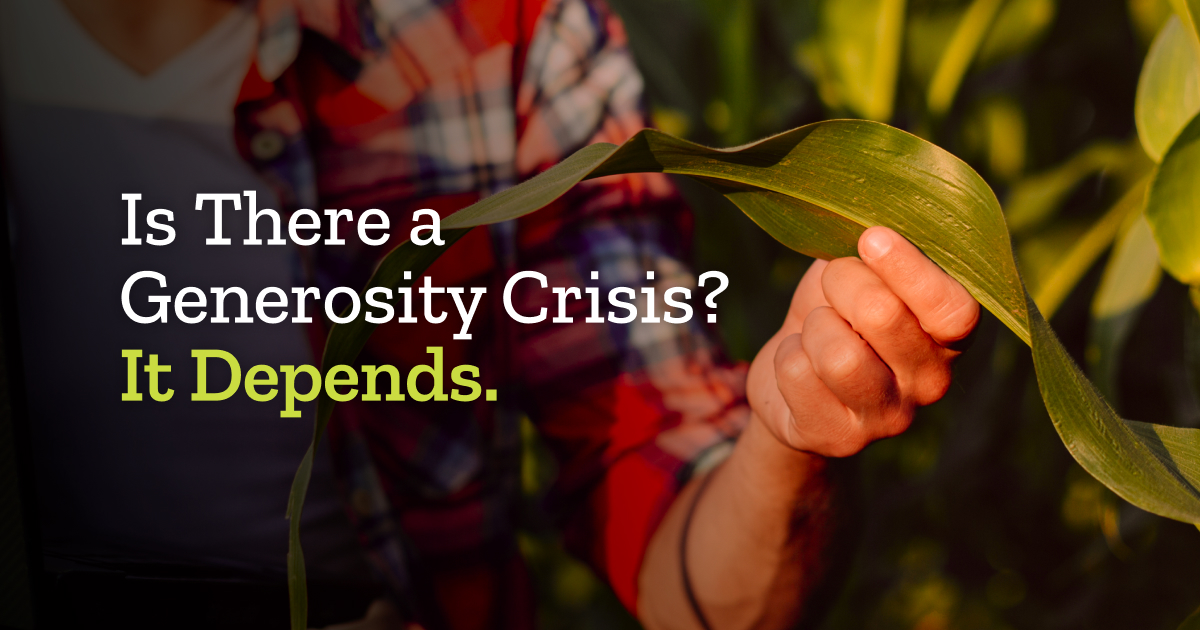Abby Shue
Vice President
Charitable Giving Is Resilient
Philanthropy in America has shown an average growth rate of 6.5% per year since 1967. Yes, factors such as inflation, recessions, stock market performance, and global disruptions can affect charitable giving to some degree. However, in comparison to other sectors, philanthropic giving remains robust when evaluated in monetary terms.
Visit Benefactor Group’s interactive tool, the 2024 Edition of Giving is Resilient, to see how these factors have affected giving over six decades.
Some Data Offers Good News
Overall, charitable giving has grown annually, peaking at an adjusted total of $621 billion in 2021. That high was driven by extraordinary generosity in response to crises like COVID-19, racial justice movements, and natural disasters. When we look at individual factors, here’s what we see:
- Recession: During recession years, giving still grows at an average rate of 5% annually.
- Declines: Total giving has declined by 1% or more only five times (in current dollars) since 1967.
- Inflation: Since 1967, giving has failed to keep pace with inflation in 13 different years. There appears to be no direct correlation between giving and inflation.
- Stock Market: Changes in giving correlate to S&P 500 performance though giving tends to lag behind the market.
- Employment: Unemployment levels have minimal effect on charitable contributions, largely due to the influence of high-net-worth individuals.
- Politics and Society: Major global events and presidential elections generally do not impact overall giving, though donors invested in political causes tend to give more to charity.
- GDP: Charitable giving has consistently represented 1.6% to 2.2% of GDP since 1967.
On the Other Hand…
America’s legacy of generosity reflects the collective commitment of citizens who contribute time and resources to causes they care about. But while total dollars flowing to the nonprofit sector have risen, participation rates in formal charitable giving and volunteering have notably declined.
Indiana University’s Philanthropy Panel Study shows that less than half of households reported making a charitable gift, a decrease from 66% in 2020. According to the Fundraising Effectiveness Project, in 2020, 43% of donations to nonprofits were from gifts over $50,000. Additionally, AmeriCorps found that volunteering rates fell from 30% in 2019 to 23% in 2021. These figures are troubling—and we also see them as a call to action to continue to celebrate the importance of everyday volunteers and donors.
What’s going on?
The Generosity Commission is looking for answers. Focused on elevating the importance of everyday donors and volunteers, the Generosity Commission recently published Everyday Actions, Extraordinary Potential: The Power of Giving and Volunteering. This initiative emphasizes how everyday acts of giving and volunteering unite communities, foster connections, and encourage civic engagement, all essential for a thriving democracy.
The Commission investigated underlying causes of what some are calling a generosity crisis. Findings suggest economic factors, such as the lack of tax incentives for lower-level donors, may play a role. Other contributing factors include waning religious and civic engagement, increasing social isolation, and declining social trust. Some experts argue that focusing on high-dollar donors has inadvertently sidelined smaller contributions, creating a negative cycle in giving.
Giving and volunteering are vital ways Americans come together for a greater purpose, underpinning our democracy. Notably, those who engage in giving and volunteering are more likely to vote.
Where do we go from here?
Philanthropy, in time and dollars, continues to fuel worthy causes of nonprofit organizations and serve Americans. The philanthropic sector has demonstrated remarkable resilience through various economic and social challenges, largely thanks to the influence of major donors.
We need to cultivate an environment where all citizens feel empowered to support causes that promote the common good. This requires adopting a more inclusive vision of philanthropy that values the essential contributions of major donors alongside those of donors and volunteers at every level. Acts of generosity not currently acknowledged by the IRS—such as crowdfunding, mutual aid, and giving to friends in need—should be recognized and celebrated. Nonprofits should allocate staff and resources to engage supporters at all levels while still prioritizing major donor programs.
To broaden the base of generosity in America, the Generosity Commission offers several additional recommendations:
- Expand research and data on evolving trends in giving and volunteering.
- Encourage business and community leaders to share their giving and volunteering experiences.
- Seriously engage youth as givers and volunteers.
- Increase the accessibility of the charitable contribution tax deduction.
Every act of giving and volunteering strengthens our nation’s social fabric. Expanding participation will ensure a resilient philanthropic sector, preventing an overreliance on a dwindling pool of major donors.





